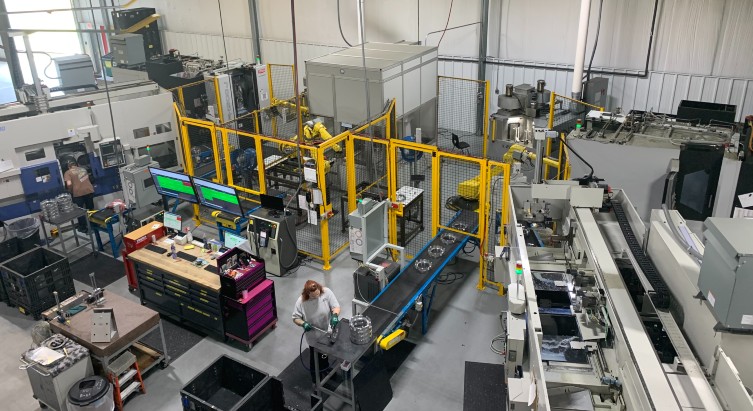Tedious. Exciting. Frustrating. However you think of RFQs (Requests for Quote), it’s a standard business practice that’s here to stay. In fact, it may be becoming a bigger differentiator within manufacturing than ever.
An RFQ allows a supplier to share the availability and price of a part or service. It may include obligations, requirements, or other aspects so the supplier understands what’s needed for success.
That’s the simple explanation. Oftentimes, companies put in incredible amounts of time and effort to reply to an RFQ, which could or could not pay off. Let’s explore RFQs in the CNC precision machining world specifically in this article, which is the first of two in a series on cost-effectiveness and on-time delivery in CNC machining.
Step-by-step overview of the RFQ process
Like any process, replying to RFQs can be smooth (when completed by experienced, knowledgeable professionals) or it can be difficult and loaded with costly mistakes (when newbies tackle the task). Here’s how it can look, step by step:
- Part of the formal RFQ, the customer sends a package to the CNC machine shop, including prints, models, required specifications, and material specs.
- The CNC machine shop gathers an internal team to review the package, looking for any inconsistencies, irregularities, extreme tolerances, and process challenges, while reviewing requested volumes.
- Once a good fit is determined (see more below), the shop gathers the necessary items for their official quote packet, including setting up the project internally (database entry, entry in an ERP system, etc.).
- Pricing requests for external services — value added services such as painting, coating, balancing, assembly, etc. — are sent to select vendors to help accurately complete the RFQ (and ensure a good fit here, too).
- At this time, the engineering department’s estimator conducts a tool-by-tool time study using estimating software that’s set up to mimic the specific parameters of the machinery used in that facility. Plus, machining center scenarios and fixture options are considered. All of this together helps generate an estimated cycle time.
- The sales manager then reviews the findings and applies internal costs — machining, tooling, packaging, scrap, logistics — and submits the quote to the customer.
With numerous people involved, plus the complexity of the part to consider, there’s no industry standard timeframe for replying to an RFQ. Quick is good, but accurate is better.
The Importance of a Good Fit
The foundation of outstanding CNC machining results is a good fit between buyer (usually an OEM customer) and supplier (the CNC shop). Capabilities, experience, material knowledge, tooling, casting partnerships, services … they don’t all need to match up perfectly, but the more they do, the more successful the project will be.
What to expect from your CNC machining partner
As mentioned in #4 above, no CNC machine shop has all possible services under their roof, which can slow down replying to an RFQ. Even the most trusted and familiar outside partnership requires time to generate accurate numbers.
Turning around an RFQ in a week (for simple machining jobs) is no walk in the park, but the best CNC machine shops do it regularly. For complex parts involving multiple vendors (foundries or other outside services), it may take 2-3 weeks to gather all necessary information to complete a quote.
Why do outside relationships matter? A shop with reliable vendor options may be able to secure a great price on coating or casting, which is more than enough to offset their own, higher priced internal machining costs. Pennies matter, especially on high-volume projects, so some RFQs need to be looked at as projects that generate long-term ROI.
What if a CNC machine shop constantly comes in 20% or 40% higher than other shops? That customer will likely stop sending RFQs to them, assuming that no project will compete. Being in the same ballpark at least keeps future opportunities alive.
Being competitive during the RFQ process is, of course, important. Yet, smart shops know that a good fit — a mutually beneficial relationship — is key to long-term prosperity for everyone. An unrealistically low RFQ response does no one any good.
Existing customer vs prospect — how is the RFQ process different?
Each relationship in life is unique. The people who know you understand your values and the way you conduct yourself. You don’t need to constantly explain what you’re all about or convince them that you’re trustworthy.
It’s the same in business, with current customers requiring less formal and detailed RFQs than prospective customers. Pricing usually isn’t a surprise, and customers know the expertise and support that comes with that partner relationship.
Without an opportunity to prove their worth, a CNC machine shop may explain their added value to a prospect, but the decision likely relies most heavily on price.
A low quote may grab the project, but replying to numerous RFQs with unreasonably low quotes is a recipe for future failure. Projects that fail to be profitable add up quickly, hurting that shop’s bottom line, threatening the entire business, and disappointing the customer.
What does a great quote look like? Are there any “red flags”?
Obviously, receiving several competitive quotes is the goal of an RFQ. The customer wants to see apples-to-apples comparisons in order to make a wise decision, yet slight variations are inevitable.
What are customers looking for in a CNC machine shop’s quote?
- Price — Piece price and tooling make for quick comparisons. Yet, as explained throughout this article, real value goes beyond a price tag
- Lead time — Without the ability to deliver the amount of parts required in the time needed, price may feel less important than it initially did
- Process details — Any cost savings identified by the shop’s engineers, often within the DFM process, are welcome and can solidify getting the work
Speaking of details, the more that can be included within an RFQ, the more confident a customer will be in selecting that supplier. Sharing specific ways that a process happens is not only transparent, it creates a feeling of legitimacy.
What “red flags” in an RFQ should be warning signals for OEMs?
- Disclaimers — A quote filled with contingencies and disclaimers should tell the customer that the CNC shop isn’t confident in their abilities, and their quote reflects that; how can anyone count on it?
- Lead times — When the issue of lead times is not addressed, especially during times of supply chain uncertainty, it screams that the shop is non-commital and, likely, not trustworthy
A tech review, a formal design review that takes place before a PO is issued, gives the shop an opportunity to requote a project after a part has been fully designed (prints are finalized and CAD models are frozen). Why is this important? Because a part still in development during the RFQ process can change drastically upon completion, often increasing the cost to machine it.
A RFQ should inspire an accurate quote that the CNC machine shop leans on after the work is awarded. Numerous hours, and a lot of brainpower, were spent to complete the RFQ properly, so it’s now the guide to a successful project.
Lastly, timing makes a difference, of course. RFQs lead to quotes that can be valid for as long as 90 days or as short as 30, depending on the CNC shop. Older RFQs require another look and, quite possibly, some major revisions.
Watch for Part 2 in this blog series on cost-effective, on-time CNC machining, next time focusing on precision parts. Until then, read these four mini-case studies: In a Bind? 4 Projects During Which Stecker Machine Rescued Customers in Need.







